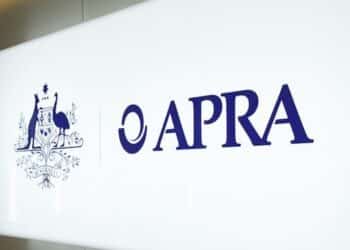The inaugural 2024 Advice Operations Research Report by VBP, sponsored by Colonial First State (CFS), found that advice businesses are exhibiting a significant growth mindset, with many looking to improve efficiency and support a greater client load.
Examining the priorities of advice businesses, the report found that increasing profitability was top of mind, with 42 per cent of respondents listing it as a key strategic focus for the coming three years, based on a survey of 171 firms.
This was followed closely by improving efficiency (40 per cent), increasing the overall number of clients they service (38 per cent), and increasing the number of clients each advisers can manage (29 per cent), all of which will ultimately support the goal of increased profitability.
Looking at client capacity, VBP said it is now seeing more advice businesses challenge the thought of advisers only managing 120 to 130 clients each, with many believing they can handle more under their current operational method and others looking to make improvements to increase their client capacity.
The report’s findings support this belief, as firms with an EBIT lower than 25 per cent are servicing, on average, 131 ongoing or annual service agreement clients and 58 risk-only clients a year per adviser.
Interestingly, firms with an EBIT higher than 25 per cent serviced less ongoing or annual service clients, with only 118 on average, but more risk-only clients, 112, per adviser.
Over recent years, it has become imperative to increase advisers’ client capacity as the industry continues to struggle with the low number of advisers and the high demand for service.
The report also investigated the challenges that advice businesses face when attempting to grow, particularly during the earlier phase as they attempt to push the limits of their capacity without the necessary support in place.
Businesses operating in the $501,000 to $1 million annual revenue bracket were considered by the report to be in the “danger zone” as it noted a significant drop in EBIT and satisfaction for this group.
While businesses with $500,000 or less in revenue had an average EBIT of 24.80 per cent and those earning between $1 million and $2 million revenue seeing an average EBIT of 24.30, those in between had an average EBIT of just 16.60 per cent, the lowest of any bracket.
Additionally, while other brackets had an overall satisfaction score of no less than 3.7 out of five, those within the danger bracket reported an average score of 3.33.
The report explained that the drop could be a result of “challenges in scaling operations”.
“Revenue is growing but so, too, are costs, that business likely has capacity challenges in that there are not enough ‘hands and heads’ to prepare and provide advice leading to a significant time deficit,” the report explained.
Mergers and acquisitions
The industry has been experiencing significant merger and acquisition (M&A) activity of late, with many utilising it as a strategy to achieve scale or expand their business.
Looking at the findings, the report revealed that only 11 per cent of respondents were not considering selling, merging with, or acquiring other businesses over the next three years, leaving the remaining 89 per cent planning on utilising M&A in some capacity in the near future.
Of the respondents, 35 per cent are looking to expand their business through M&A either by acquiring additional clients (17 per cent) or clients and advisers (18 per cent).
On the other side, almost a third (31 per cent) of principals are planning to sell their businesses and move on, and 14 per cent are considering selling with the principal continuing to work within the larger organisation post-sale.
Furthermore, only 4 per cent of firms are looking to merge with other businesses to achieve scale, and 5 per cent are considering taking on an equity partnership to access capital.
Elaborating on their M&A plans, one respondent said they were “considering options to more quickly take revenue beyond $3.5 million”. Another said they would “potentially sell about 20 per cent of the business to free up capacity to add more ideal clients”.
Overall, the findings suggest that advice businesses are actively reaching for growth over the coming years, utilising a number of strategies to achieve their goals.



